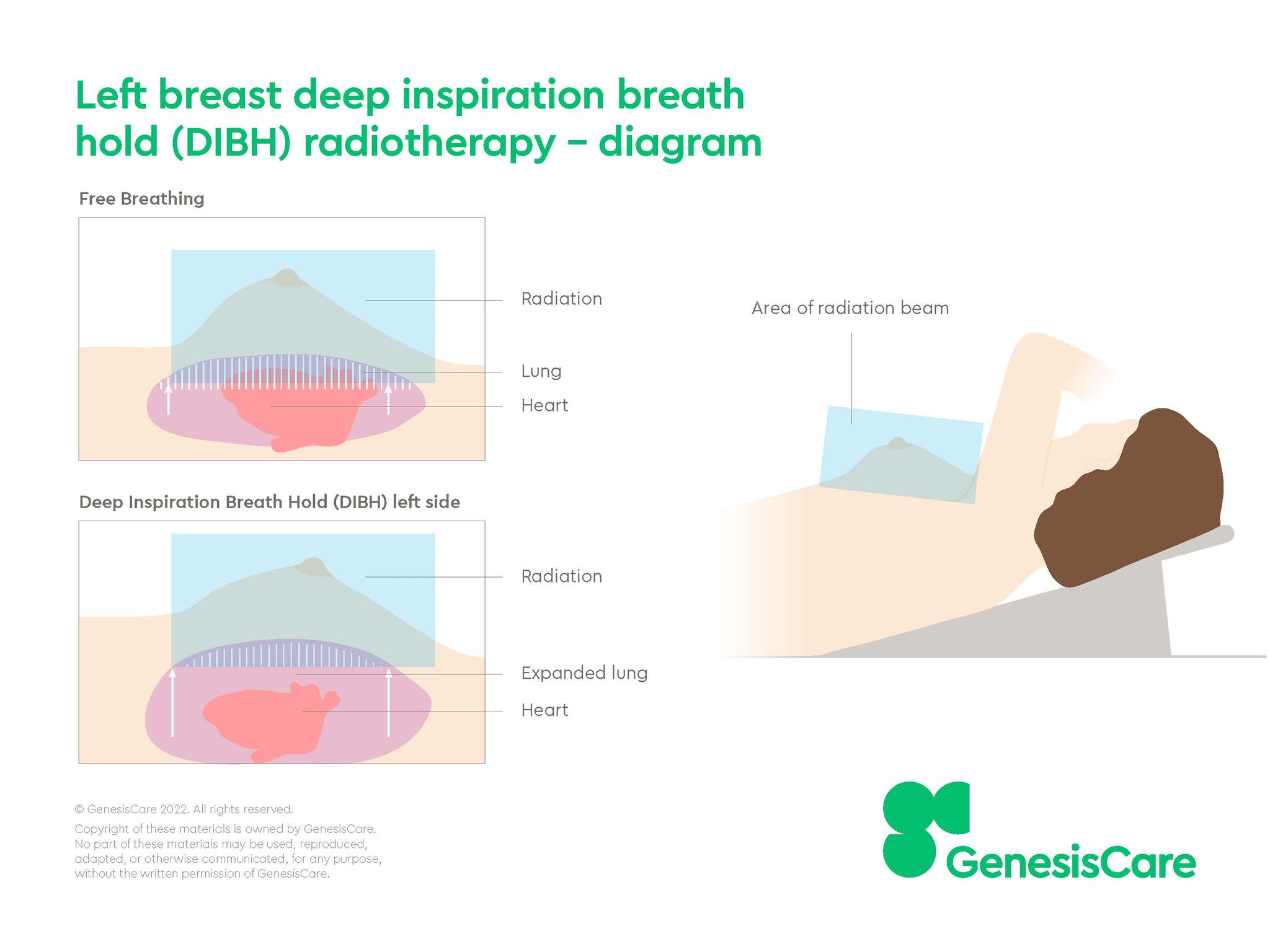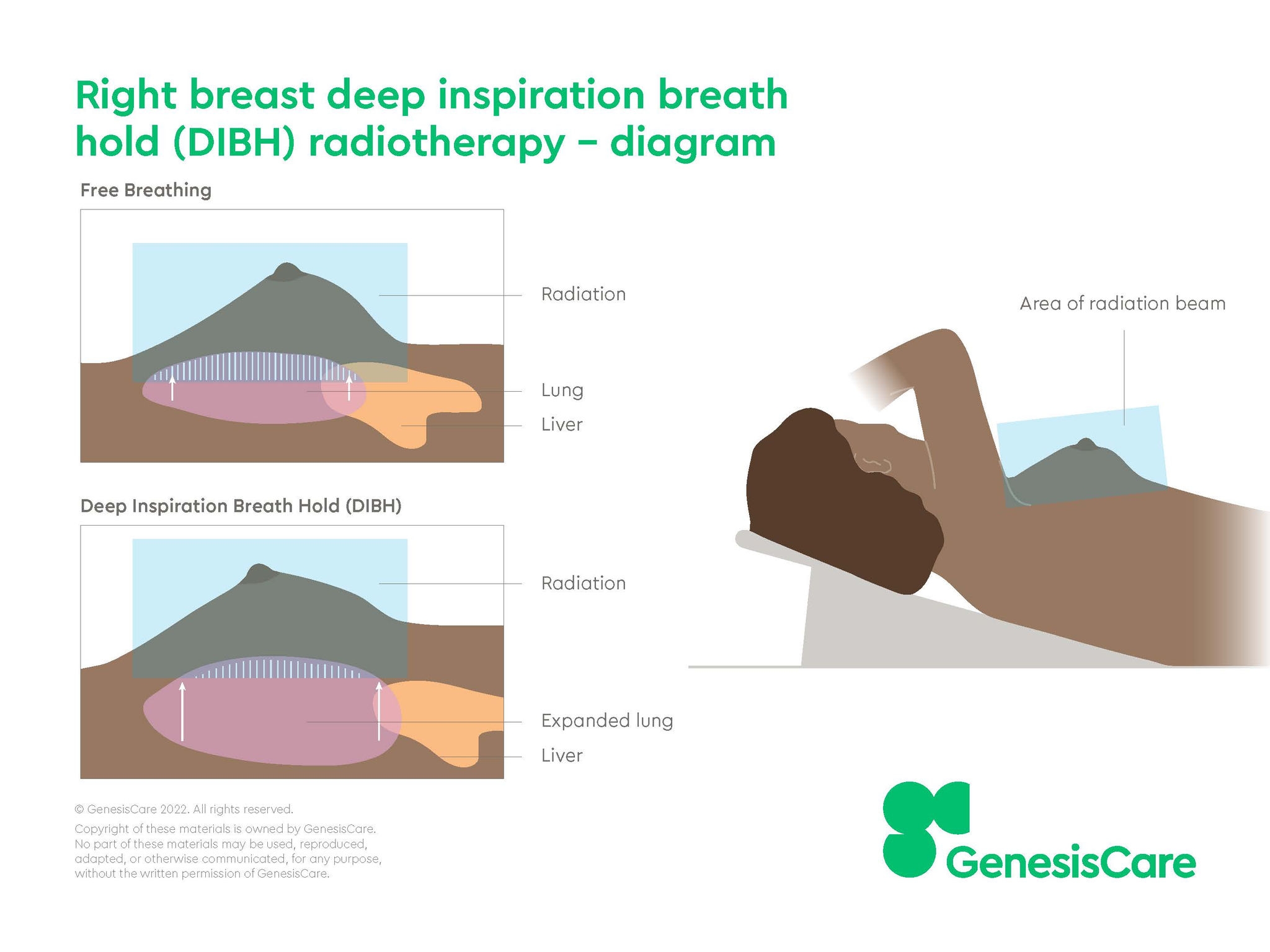Putting the patient first: new ways to treat breast cancer
Breast cancer is the most common cancer found in women, and although it’s considered the number one cause of cancer deaths among women, more and more women are overcoming this disease.
This success is due not only to advances in screening and early detection, but also to improvements in breast cancer treatment.
One treatment on the frontline of fighting breast cancer is radiotherapy after breast surgery.
Radiotherapy to the breast after surgery confers a number of benefits but also brings with it some potential downsides. One issue is the risk of damage to organs near the breast(s) undergoing treatment, such as the heart, liver and lungs. Techniques such as deep inspiration breath hold (DIBH) are now used to reduce the amount of radiation reaching these organs.
We’ve been using DIBH for all patients who have breast cancer treatment to their left side (the same side as your heart). Recent evidence shows that DIBH also gives essential lung and liver protection during radiotherapy on the right side.
We’re now also using DIBH for right-sided cancers as standard. We always work to offer our patients the latest treatment options.
Left-sided DIBH

Right-sided DIBH

What is deep inspiration breath hold?
Radiotherapy can sometimes cause unwanted complications. These can happen if organs near the breast receive unintentional radiation. It’s especially important if you’re receiving radiation to the left breast, as some radiation may reach the heart.
Deep inspiration breath hold (DIBH) reduces the chance of radiation reaching the heart. When you take and hold a deep breath, your heart moves away from the chest wall. By holding your breath at certain moments to control your breathing during your radiotherapy, your heart moves further away from the breast while the radiotherapy is delivered, helping to protect it.
Ruth’s story
How deep inspiration breath hold helped Ruth during treatment
Ruth was treated for breast cancer at GenesisCare using the innovative radiotherapy technique called deep inspiration breath hold (DIBH) which protects healthy heart, lung and liver tissues and ensures the cancer is targeted precisely. Watch Ruth’s story.
Tattoos during breast cancer radiotherapy
Traditional radiotherapy can require permanent markings or tattoos on the body to help position your body during each treatment session.
Because these markings are permanent, they can often serve as a difficult reminder of treatment.
Studies investigating the emotional impact of these tattoos on women found that:
- 70% felt negatively about this change to their body
- 78% would have chosen a tattoo-less option if given the choice
- Women would have travelled an average additional 72km to be treated at a clinic using a tattoo-less technique
- Tattoos made women feel like they lacked choice
- Tattoos induced a feeling of disempowerment
- Tattoos were seen as a permanent reminder of their illness
Most women undergoing breast cancer radiotherapy involving permanent tattoos do not view these markings positively.
Fortunately, healthcare providers are becoming more aware of the psychological and emotional impact these markings can have on a breast cancer survivor, leading more clinics to offer tattoo-less alternatives.
At GenesisCare, we use specialist motion and breath-hold techniques to protect the heart and lungs during radiotherapy, so you don’t need permanent tattoos or skin markings.
Since being in the correct position during treatment is vital for accurate radiotherapy, studies have examined the precision of tattoo-less positioning alternatives. One technique we use at GenesisCare is called surface imaging. This uses multiple cameras to scan the 3D surface of your body, making it easier to stay in the same position for each treatment session.
Surface imaging has shown improvements in safety and comfort, but it also means you don’t need permanent markings to guide your treatment.
If you’re considering radiotherapy for breast cancer, we make sure you have choices with your treatment, including when it comes to permanent markings on your body.
When having radiotherapy at GenesisCare, we know it’s important to maintain control during your treatment. By offering tattoo-less alternatives as standard, you’re taking back control and making treatment choices that work for you.
Personalised breast cancer care
Each year we treat thousands of patients at our specialist centres that are equipped with cutting edge technology to diagnose and treat breast cancer. We’re dedicated to providing rapid access to a professional and caring service to every patient, making it easy to get the care you need with less waiting and worrying. Find out more about our breast cancer service.

